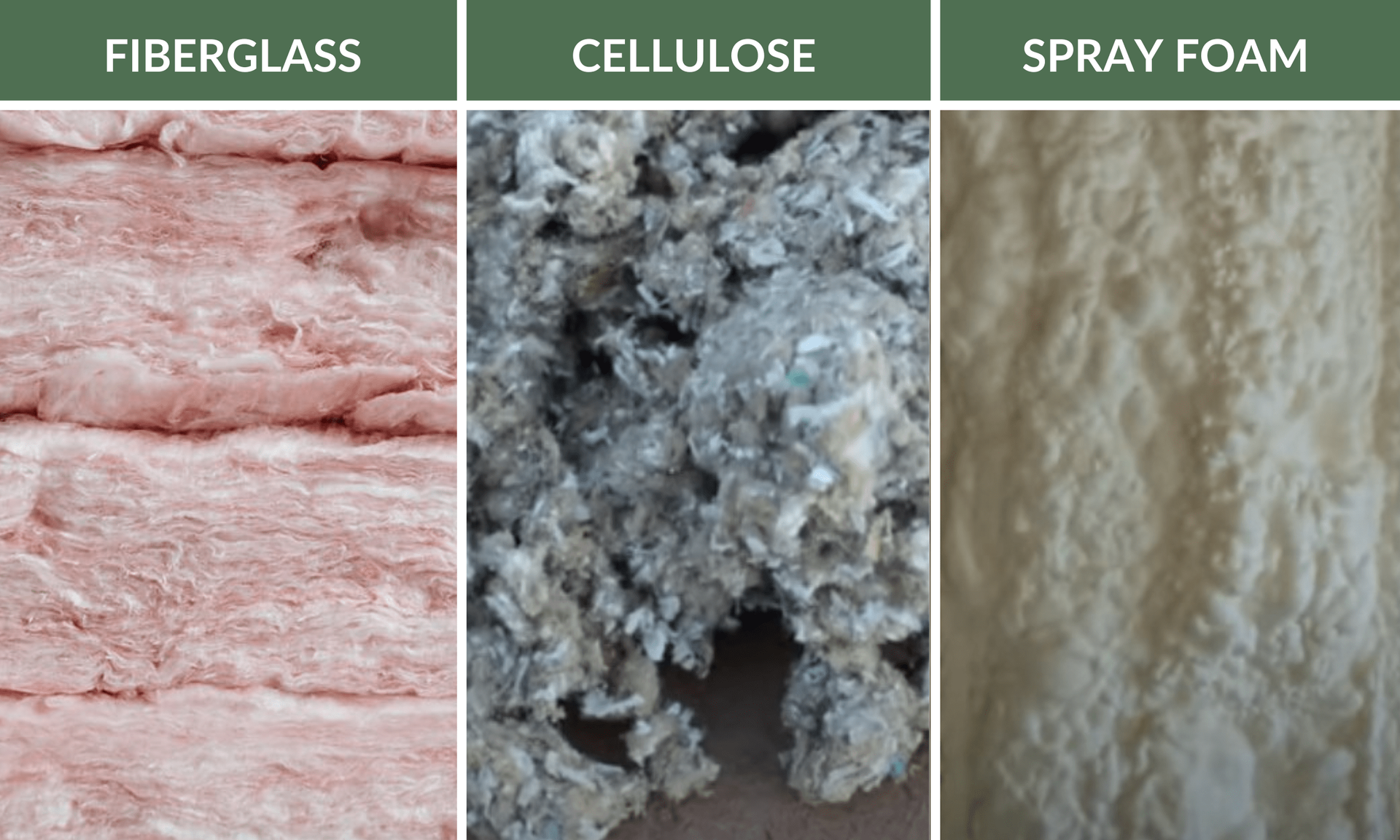Comparing Insulation Options:
Why Spray Foam Is the Superior Choice
When it comes to insulating your home, selecting the right material is essential for long-term comfort, efficiency, and cost-effectiveness. Fiberglass, cellulose, and spray foam are the most common options available, but how do they compare? Let’s break it down to help you make the best choice for your home.

Effectiveness:
Spray Foam Outshines the Rest
The effectiveness of insulation depends on factors like R-value (a measure of thermal resistance) and the material’s ability to provide an airtight seal.
- Fiberglass: A budget-friendly option, fiberglass can adequately insulate your home if installed properly. However, it requires extra measures like sealing gaps to maximize its performance, and its effectiveness may diminish over time due to shifting or deterioration.
- Cellulose: With a higher R-value than fiberglass, cellulose offers better thermal resistance and typically lasts longer. However, it still falls short in certain areas, such as air sealing.
- Spray Foam: Spray foam is the clear winner in effectiveness. Not only does it offer superior R-value and thermal resistance, but it also provides a built-in air seal. This air-sealing capability is a game-changer because heat transfers much faster through air movement than through conduction. By stopping air leaks, spray foam enhances energy efficiency and keeps your home comfortable year-round.

Maintenance:
Save Time and Effort with Spray Foam
Insulation maintenance is an important consideration when comparing materials:
- Fiberglass: Over time, fiberglass deteriorates and requires additional layers to maintain its insulating properties. If installed on the attic floor, maintaining proper venting adds to the effort required.
- Cellulose: While cellulose offers better performance than fiberglass, it still requires regular maintenance. Blown-in cellulose can shift or settle due to airflow in vented attics, leaving low spots that need to be raked or refilled periodically.
- Spray Foam: Maintenance-free and built to last, spray foam stands apart. Once applied, spray foam stays in place and retains its effectiveness for the lifetime of your home. Unlike fiberglass and cellulose, it doesn’t require re-layering, raking, or venting adjustments. It’s a one-and-done solution that eliminates ongoing maintenance concerns.
Cost:
A Worthwhile Investment
Cost is always a factor when deciding on insulation, but it’s important to weigh the upfront price against long-term savings and benefits:
- Fiberglass: The least expensive option, fiberglass is widely available and often used for DIY projects. However, its lower cost comes with higher maintenance needs and a shorter lifespan.
- Cellulose: A step up in price and performance, cellulose often requires professional installation. While it’s more effective than fiberglass, its maintenance requirements add to its long-term cost.
- Spray Foam: Spray foam has the highest upfront cost, but its lifetime value far exceeds the alternatives. With professional installation, a superior air seal, and a maintenance-free lifespan, spray foam provides unmatched energy savings and peace of mind.
Why Spray Foam Is the Best Choice
When comparing fiberglass, cellulose, and spray foam, the advantages of spray foam are clear. Its superior thermal resistance, air-sealing capabilities, and maintenance-free durability make it the ultimate insulation solution for any home. While it may cost more initially, the long-term savings on energy bills and reduced maintenance make spray foam the best investment.
Ready to transform your home’s comfort and efficiency with spray foam insulation?
Contact us today to get started!